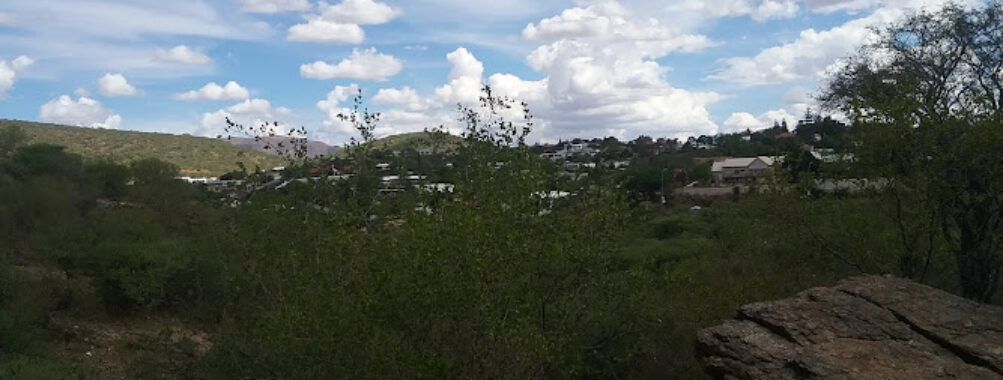
National Botanical Gardens
“`html
Table of Contents
Description
The National Botanical Gardens in Windhoek is one of those places that quietly surprises you. It’s not flashy or overly polished like some tourist attractions try to be — and that’s exactly what makes it special. It feels real, grounded, and deeply connected to Namibia’s natural beauty. The moment you walk in, the air shifts — it’s calmer, cleaner, and somehow more alive. You’ll hear the soft rustle of leaves, the hum of bees, maybe even the distant chirp of a bird you can’t quite see but definitely sense. It’s the kind of place that reminds you to slow down and actually look at the world around you.
What stands out most here is the sense of care. You can tell the people who maintain the gardens truly love what they do. The layout feels natural — winding paths, shaded benches, and open spaces that seem to invite you to linger a little longer. There’s a mix of native and endemic plants that tell the story of Namibia’s landscapes: hardy succulents, desert flora, and bursts of color that seem to defy the dry climate. And if you’re a plant enthusiast, you’ll probably find yourself geeking out over species you’ve only read about.
It’s also surprisingly good for families. Kids can run around safely, and there’s enough open space to keep them entertained without it feeling chaotic. It’s educational too — the signage is informative without being overwhelming, and you might even spot a few small animals or birds if you’re patient. I remember my first visit here years ago; I brought a notebook thinking I’d jot down a few plant names. Instead, I ended up sitting under a tree for an hour, just watching the light change across the landscape. That’s the kind of place this is — one that invites stillness and reflection, even if you didn’t plan for it.
Key Features
- Extensive collection of indigenous Namibian flora, including rare and endemic species
- Walking trails that weave through different ecological zones, perfect for casual strolls or quiet reflection
- Educational displays about conservation, local ecosystems, and sustainable gardening practices
- Family-friendly areas with shaded seating and safe open spaces for children
- Panoramic viewpoints offering beautiful city and landscape vistas
- Frequent community events and guided tours that highlight seasonal blooms and conservation efforts
- Peaceful picnic spots ideal for a relaxed afternoon outdoors
Best Time to Visit
If you ask me, the best time to visit the National Botanical Gardens is during the cooler months, roughly from May to September. The weather is mild, and you can actually enjoy walking the trails without the midday heat weighing you down. Early mornings are magical — the light is soft, the air crisp, and the gardens feel almost meditative. You might even catch dew on the leaves if you’re lucky.
That said, I’ve gone in the warmer months too, and while it can get hot, the gardens still hold their charm. Some of the desert plants bloom then, adding a splash of unexpected color. If you’re into photography, this is when you’ll get those dramatic contrasts — golden sunlight, deep shadows, and that unmistakable Namibian sky. Just bring water, sunscreen, and maybe a hat you don’t mind getting dusty.
How to Get There
Getting to the gardens is pretty straightforward if you’re staying in Windhoek. Most locals know the spot, so even if you hop in a taxi or ask your rideshare driver, they’ll likely know where to go. It’s close enough to the city center that you don’t have to plan an entire day around it, though you might end up staying longer than you expect. For those who like to walk, it’s an easy stroll from several nearby neighborhoods, and the route itself gives you a nice peek into daily Windhoek life.
If you’re driving, parking is generally available and safe. I’d recommend going earlier in the day if you want to avoid crowds — though, to be honest, it’s rarely packed. It’s one of those places that locals love but tourists often overlook, which makes it feel a bit like a hidden gem.
Tips for Visiting
A few things I’ve learned from my own visits might make yours smoother — and maybe a bit more memorable. First, wear comfortable shoes. The paths are well-kept, but they’re still natural terrain, and you’ll want to wander. Bring water, especially if you’re visiting later in the day, because the Namibian sun doesn’t play around. A hat and sunscreen are smart choices too.
If you’re into photography, go early or late in the afternoon when the light is golden and the shadows stretch long. The textures of the plants really pop then. And don’t rush. It’s tempting to breeze through, but you’ll miss the small details — the tiny blossoms, the patterns in the rocks, the way the wind moves through the grasses.
Families with kids will find it’s an easy outing — safe, educational, and not too demanding. I’ve seen plenty of children chasing butterflies or pointing out birds with wide-eyed wonder. If you’re into botany or conservation, keep an eye out for the interpretive signs that explain the ecosystems represented here. They’re short but genuinely informative.
Lastly, take a moment just to sit. There’s something grounding about being surrounded by plants that have adapted to such a tough environment. It’s a quiet reminder that resilience can be beautiful. Whether you’re a nature lover, a traveler looking for a calm spot in the city, or just someone who needs a breather from the rush of travel, the National Botanical Gardens offers that rare kind of peace you don’t have to search hard to find — you just have to show up and let it find you.
“`
Location
Places to Stay Near National Botanical Gardens
Find and Book a Tour
Explore More Travel Guides
No reviews found! Be the first to review!